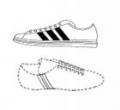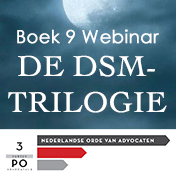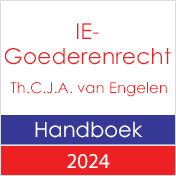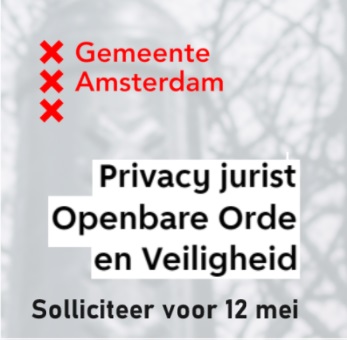
B9 10199. Gerecht EU, 29 september 2011, zaak T-479/08, adidas tegen OHIM/Patrick Holding.
Merkenrecht. Strepenzaak. EU-oppositie adidas o.g.v. ouder nationale beeldmerk ‘bestaande in de afbeelding van een schoen met drie strepen op de zijkant’ (voor schoenen) tegen de inschrijving van een beeldmerk bestaande in de afbeelding van een schoen met twee strepen op de zijkant van Patrick Holding. De oppositie wordt afgewezen, maar levert geen nieuwe interessante strepen-jurisprudentie op. De afwijzing geschiedt op formele gronden: De aard en de status van het oudere merk van adidas zijn onvoldoende duidelijk gemaakt, waardoor o.a. niet duidelijk is of het een beeldmerk of vormmerk betreft, waardoor de beschermingsomvang niet goed kan worden vastgesteld.
48. In the present case, it is apparent from the graphic representation submitted by the applicant on 29 November 2004 that the earlier mark is represented by a shoe, which is, moreover, one of the goods in respect of which registration was sought, namely, goods in Class 25. Thus, where the earlier mark consists of the shape of the product itself, it will be necessary to take into consideration the shape of the product as a whole in order to assess the mark’s distinctiveness. On the other hand, where the earlier mark is a figurative mark, even if the overall impression has to be taken into account, any graphic elements present are likely to assume a greater or lesser importance in the assessment of the distinctiveness of that mark. It follows from this that, if the earlier mark is a three-dimensional mark, it may be found to be less distinctive and, therefore, enjoy a more limited protection than that likely to be afforded to a figurative mark.
49. Accordingly, in the circumstances of the present case, in which it is not possible a priori to deduce the type of the earlier mark at issue from the graphic representation, the indication of the type of mark was of vital importance in the context of the opposition proceedings, and it was for the applicant to communicate that indication to OHIM so that the latter could ascertain the scope of the mark’s protection. In that connection, the Court cannot draw any inference from the fact that, in its letter of 29 November 2004, the applicant used the expression ‘the earlier … national figurative marks’ in a general fashion, without further explanation, to allude to the earlier national marks as a whole.
(…) 55. In the light of the foregoing, and even if, as the applicant submits, the Board of Appeal erred in criticising the applicant’s failure to submit the description of its earlier mark No 39 950 559, the fact remains that, in the absence of indications of the type and legal and procedural status of that mark – which are essential – the Board of Appeal was correct to find, in paragraph 46 of the contested decision, that it was impossible to ascertain the legal status, the nature and the actual scope of the protection of that mark’s registration.
Lees het arrest hier.



























































